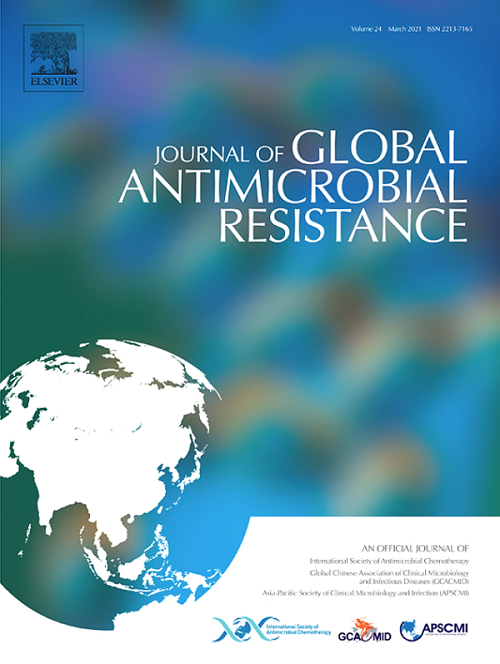Systematic review and meta-analysis of prediction models for multidrug-resistant organism infections in comprehensive intensive care units
IF 3.2
3区 医学
Q2 INFECTIOUS DISEASES
引用次数: 0
Abstract
Objective
To explore the predictive factors for infections caused by multidrug-resistant bacteria and to systematically evaluate risk prediction models for multidrug-resistant bacterial infections in comprehensive intensive care units (ICUs), with the aim of providing references for clinical medical personnel to establish and improve risk prediction models for such infections.
Methods
A computer search was conducted in Chinese and English database for studies on the construction of risk prediction models for multidrug-resistant bacterial infections in comprehensive ICUs, with the search timeframe from the establishment of the database to 26 December 2024. The quality of the literature was assessed via the Prediction Model Risk Of Bias ASsessment Tool, and meta-analysis was performed via RevMan 5.4 and MedCalc software.
Results
Among the 27 articles, 37 risk prediction models were constructed, with area under the receiver operating characteristic curve (AUC) values ranging from 0.718 to 0.992. A quality assessment of the literature indicated a high risk of bias and good applicability. A meta-analysis using MedCalc on AUC values revealed a combined modelling group AUC of 0.867. The meta-analysis revealed 12 risk factors that could predict multidrug-resistant infections.
Conclusions
Current risk prediction models for multidrug-resistant bacterial infections in the ICU are still in the developmental stage. Most prediction models lack calibration methods and external validation, and only univariate analysis is used to select variables, resulting in a high risk of bias. Future efforts should focus on improving model construction methods and continuing to develop risk prediction models with higher accuracy.
综合重症监护病房耐多药菌感染预测模型的系统评价与meta分析。
目的:探讨多药耐药菌感染的预测因素,系统评价综合重症监护病房(icu)多药耐药菌感染风险预测模型,为临床医务人员建立和完善该类感染风险预测模型提供参考。方法:计算机检索综合icu中、英文数据库中构建耐多药细菌感染风险预测模型的研究,检索时间范围为数据库建立至2024年12月26日。通过预测模型偏倚风险评估工具(PROBAST)评估文献质量,并通过RevMan 5.4和MedCalc软件进行meta分析。结果:27篇文章共构建了37个风险预测模型,受试者工作特征曲线下面积(AUC)取值范围为0.718 ~ 0.992。对文献的质量评估表明偏倚风险高,适用性好。使用MedCalc对AUC值进行meta分析显示,联合建模组的AUC为0.867。荟萃分析揭示了12个可以预测耐多药感染的风险因素。结论:目前ICU多重耐药细菌感染的风险预测模型仍处于发展阶段。大多数预测模型缺乏校准方法和外部验证,仅使用单变量分析来选择变量,导致偏差风险高。未来的工作重点是改进模型构建方法,继续开发更高精度的风险预测模型。
本文章由计算机程序翻译,如有差异,请以英文原文为准。
求助全文
约1分钟内获得全文
求助全文
来源期刊

Journal of global antimicrobial resistance
INFECTIOUS DISEASES-PHARMACOLOGY & PHARMACY
CiteScore
8.70
自引率
2.20%
发文量
285
审稿时长
34 weeks
期刊介绍:
The Journal of Global Antimicrobial Resistance (JGAR) is a quarterly online journal run by an international Editorial Board that focuses on the global spread of antibiotic-resistant microbes.
JGAR is a dedicated journal for all professionals working in research, health care, the environment and animal infection control, aiming to track the resistance threat worldwide and provides a single voice devoted to antimicrobial resistance (AMR).
Featuring peer-reviewed and up to date research articles, reviews, short notes and hot topics JGAR covers the key topics related to antibacterial, antiviral, antifungal and antiparasitic resistance.
 求助内容:
求助内容: 应助结果提醒方式:
应助结果提醒方式:


